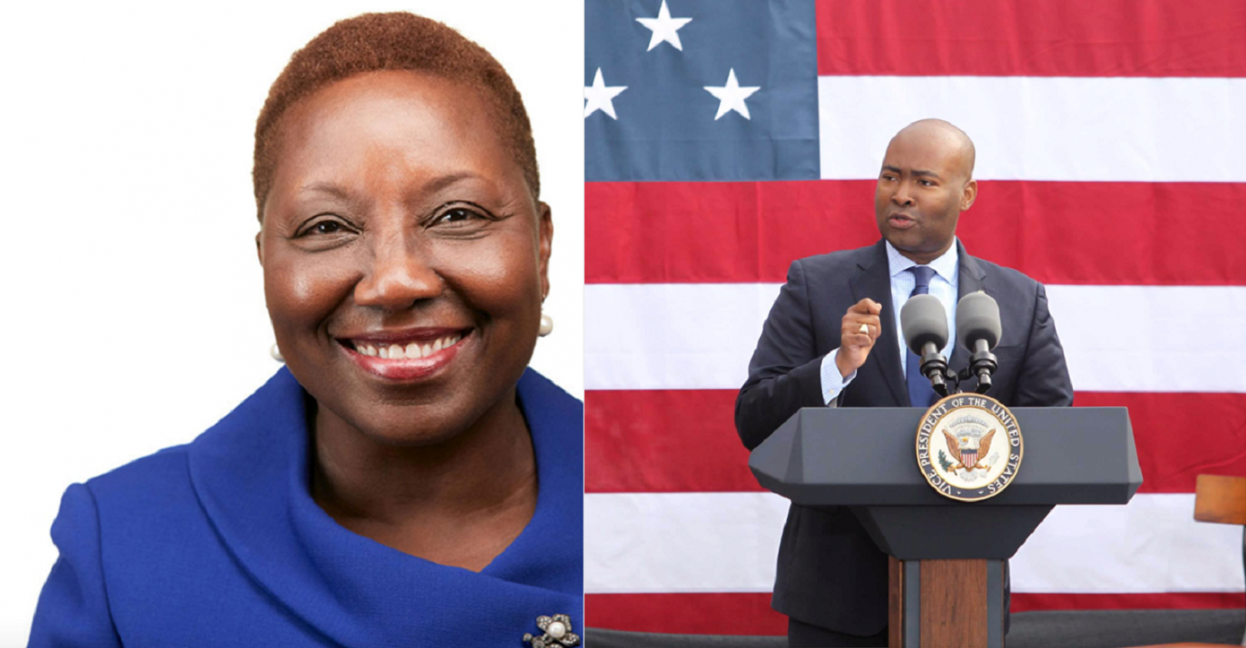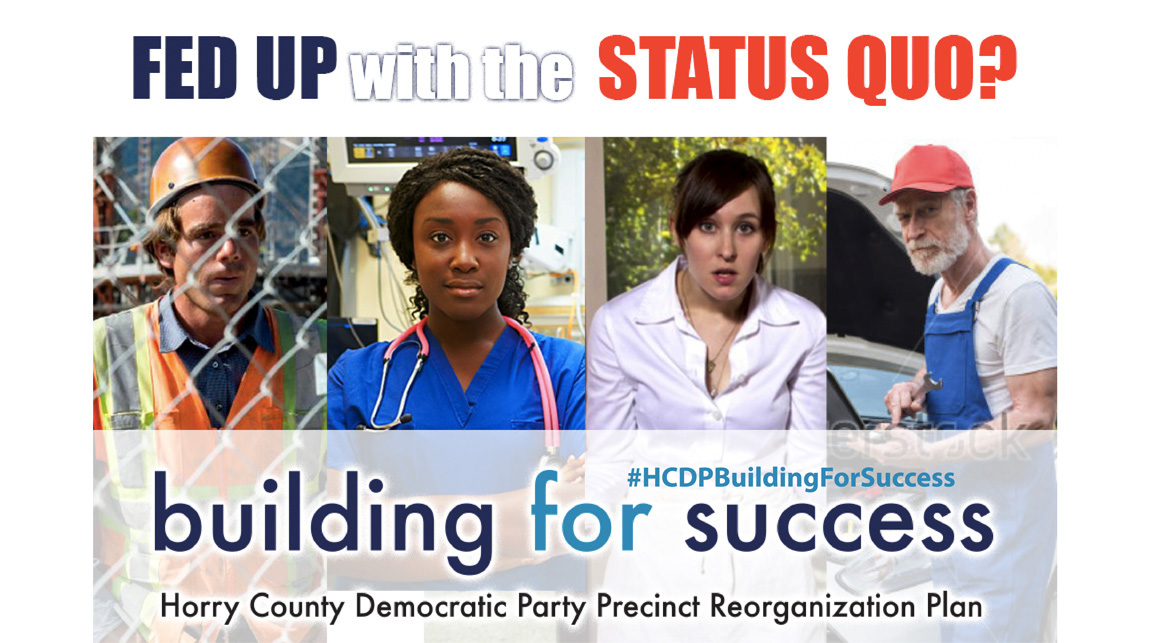By a member of the HCDP Communications Committee
Two bills are currently being negotiated in Congress pitting Democrats against Republicans and conservative Democrats against progressive Democrats. A resolution needs to be found.
The first is the $1.2 trillion bipartisan Senate Infrastructure and Jobs Act that focuses on investment in physical assets like roads and bridges. The second is a “human infrastructure” bill that is at the heart of President Biden’s Build Back Better agenda and calls for investments of $3.5 trillion in people rather than in physical assets.
That bill is being moved in the Senate by Democrats as a budget resolution bill that allows passage by “reconciliation” to avoid a Senate filibuster by Republicans.
Republicans like South Carolina Senator Lindsay Graham helped write the first bill because he believes investment in physical infrastructure is a primary role of government. Like other Senate Republicans, he dismisses the second bill’s investment in people as a tax-and-spend dream of the socialist left.
Democrats are in general agreement on the need to invest in people, but some have concerns over the cost or some of the specific details, and those differences must be resolved if the bill is to get out of Congress.
Despite the maneuvering and votes in Congress and the news coverage for and against, a recent CBS poll reveals that 59 percent of respondents know of the $3.5 trillion price tag, but most don’t know what’s in the bill. Only 10 percent of those polled said they know a lot about the specifics in the bill, while 33 percent said the know some and 58 percent said they know nothing of the specifics.
Putting the Price Tag in Context
It’s not surprising that 59 percent of those polled by CBS are aware of the $3.5 price tag. Three and a half trillion dollars is an almost incomprehensible amount. Within the context of the US economy and federal spending though, $3.5 trillion is minor.
As the Intercept explains, the $3.5 trillion is a combination of tax cuts and new spending, and spread out over 10 years is about 1.2 percent of the US economy. Senator Bernie Sanders points out that Gross Domestic Product over the next ten years is estimated to be about $300 trillion, thus, $3.5 trillion is about one percent of the total. As for federal spending, the Congressional Budget Office projects spending of $63.4 trillion over the next ten years. If new spending amounts to $2.5 trillion, it would be about 4 percent of federal spending.
Respondents to the CBS poll favor federal funding for:
- Lowering prescription drug prices — 88%
- Medicare coverage for dental, eye and hearing — 84%
- Paid family/medical leave — 73%
- Tax increases for high income people — 68%
- Tax increases for corporations — 67%
- Universal Pre-K — 67%
Prescription Drug Prices and Medicare
In remarks in August, President Biden explained how Medicare would be used to introduce competition to lower drug prices. Medicare will negotiate fair prices based on the costs of research and development, profit, and affordability to consumers. If a significant amount is invested in a drug making it very expensive, there still must be a way to save lives by providing it to those who can’t afford it.
The negotiated prices would be extended beyond Medicare to employer-based plans. A 95 percent excise tax would be placed on drug distributors who do not charge the negotiated rates. The savings to employers and employees will be in the billions of dollars per year.
The Medicare savings from lowering drug prices would be used to expand Medicare to cover dental, eye and hearing.
Locally, Data for Progress estimates that 92 percent of registered voters in South Carolina’s 7th Congressional district support Medicare negotiating lower prescription drug prices.
Paid Family and Medical Leave
The COVID pandemic exposed the vulnerability of the US as the only industrialized country without national paid leave. The National Partnership for Women and Families reports that 80 percent of working adults do not have access to paid family and medical leave. Caregivers, most of whom are women, must choose between the basics of providing care, paying for rent and food, buying clothes and medicine, etc.
The reconciliation bill would provide 12 weeks of paid family and medical leave based on a worker’s recent wages. Those with lower wages would see a larger portion of the pay replaced with the family and medical leave. Paid leave would be granted for new births, adoptions, serious illness and caring for family members.
District 7 Representative Tom Rice sits on the Ways and Means Committee that is considering paid family and medical leave. In a September 16th press release, Rice railed against the reconciliation plan. Rice condemned what he calls bigger government programs and “If you rely on the government to take care of you, you will always be in poverty.” Rice seems to imply that “take care of you” means a laziness or lack of will by the recipient. “Take care of you” should mean protection, which is one of the functions of government. The 80 percent of working adults without access to paid family and medical leave can’t be all lazy.
Tax Increases for High Income People and Corporations
It’s not surprising that about two thirds of the CBS poll respondents are in favor of higher taxes on the rich and the corporations they own. NPR recalls that in 2016, Nobel laureate economist Joseph E. Stiglitz wrote:
“Snowballing changes to the tax code … over the past 35 years have prioritized tax cuts and subsidies focused on those at the top, placing a greater tax burden on the rest and causing neglect of critical public investments.”
In 2017, President Trump’s Tax Cut and Jobs Act continued to make things worse for the middle class and workers with about 60 percent of the benefits going to those in the top 20 percent.
Build Back Better begins to reverse that process. Those earning below $200,000 would see tax cuts with the largest cuts going to those earning under $20,000 according to Business Insider. Extension of the child tax credit is responsible for much of the benefit. As part of the American Rescue Plan, the child tax credit was increased, and advanced payments made to families. Child poverty fell to 14 percent and a degree of stability was provided to families during the pandemic.
Extension of the child tax credit could lower the child poverty rate to 8 percent, as reported by CNBC. That is roughly a 40 percent decline nationally. Locally, the percent of children living below the poverty line in South Carolina is estimated to decline about 47 percent.
Universal Pre-K and Education
Build Back Better investments include universal pre-K, free community college tuition, expanded Pell Grants and repairing and modernizing public schools. Repairing and modernizing public schools is playing catch-up. Those investments should’ve been made all along to provide quality education. Instead, funding for public education has been starved. Buildings crumble, roofs leak, mold grows, and teachers are underpaid for the sake of no tax increases.
Beyond maintenance, investment in education pays high dividends that should be appealing to those who believe in running the government like a business. NPR interviewed Nobel laureate James Heckman, a professor of economics at the University of Chicago and the director of the Center for the Economics of Human Development. He cited increased earnings, improved health, IQ and reduced crime as benefits of quality pre-K. When a dollar amount is applied to those findings, the rate of return is about 13 percent. Any rational businessperson would see that as an investment worth pursuing.
Reconciliation is a Good Investment
The seemingly overwhelming price tag is not outrageous in the context of the US economy or federal spending over the next ten years. Only those items relevant to the CBS poll were discussed, but there is much more included in the $3.5 trillion. The Senate Democrats topline summary also includes:
CLIMATE:
- Creates a new Clean Electricity Payment Program
- Provides clean energy, manufacturing, and transportation tax incentives and grants
- Imposes new polluter fees (methane and carbon imports)
- Invests in climate smart agriculture and forest management investments for farmers and rural communities
- Creates coastal and ocean resiliency programs
- Makes drought, wildfire, and Interior Department investments
- Provides new consumer rebates for home electrification and weatherization
- Provides Environmental justice and climate resilience
- Electrifies the federal vehicle fleet and buildings
INFRASTRUCTURE AND JOBS:
- Historic level of investments in public housing, green and sustainable housing, housing production and affordability
- Establishes the first ever Civilian Climate Corps
- Invests in workforce development and job training programs to connect workers to good-paying jobs
- Provides green cards to millions of immigrant workers and families
- Funds smart technology for safe and efficient borders for trade, travel and migration
- Largest ever one-time investment in Native American infrastructure projects
- Rehabilitates aging Veterans Administration buildings and hospitals
- New economic development investments to revitalize communities and transform regions for new innovation jobs
- Invests in research and development and strengthens U.S. manufacturing supply chains
- Expands access to capital and markets for small businesses
Democrats Fighting for You
Republicans have vowed to oppose this important legislation, forcing Senate Democrats to pass it themselves under the complex reconciliation process to sidestep the GOP’s promised filibuster. Once again, it is President Biden and Democrats in Congress who are working to provide these benefits to the American people, and once again, it is in the face of uniform Republican opposition.
If you believe Congress should pass President Biden’s Build Back Better Agenda, which has as its hear the reconciliation bill, please contact Sens. Lindsey Graham and Tim Scott as well as Rep. Tom Rice and tell them to stand up for the people, not the wealthy and the corporations.
And please support HCDP’s efforts to recruit and elect outstanding Democratic candidates and support the Democratic agenda. So, please contribute. It’s time to #RISEUP! and defeat the Republicans’ efforts that will only destroy our nation. Please join us in that effort.






